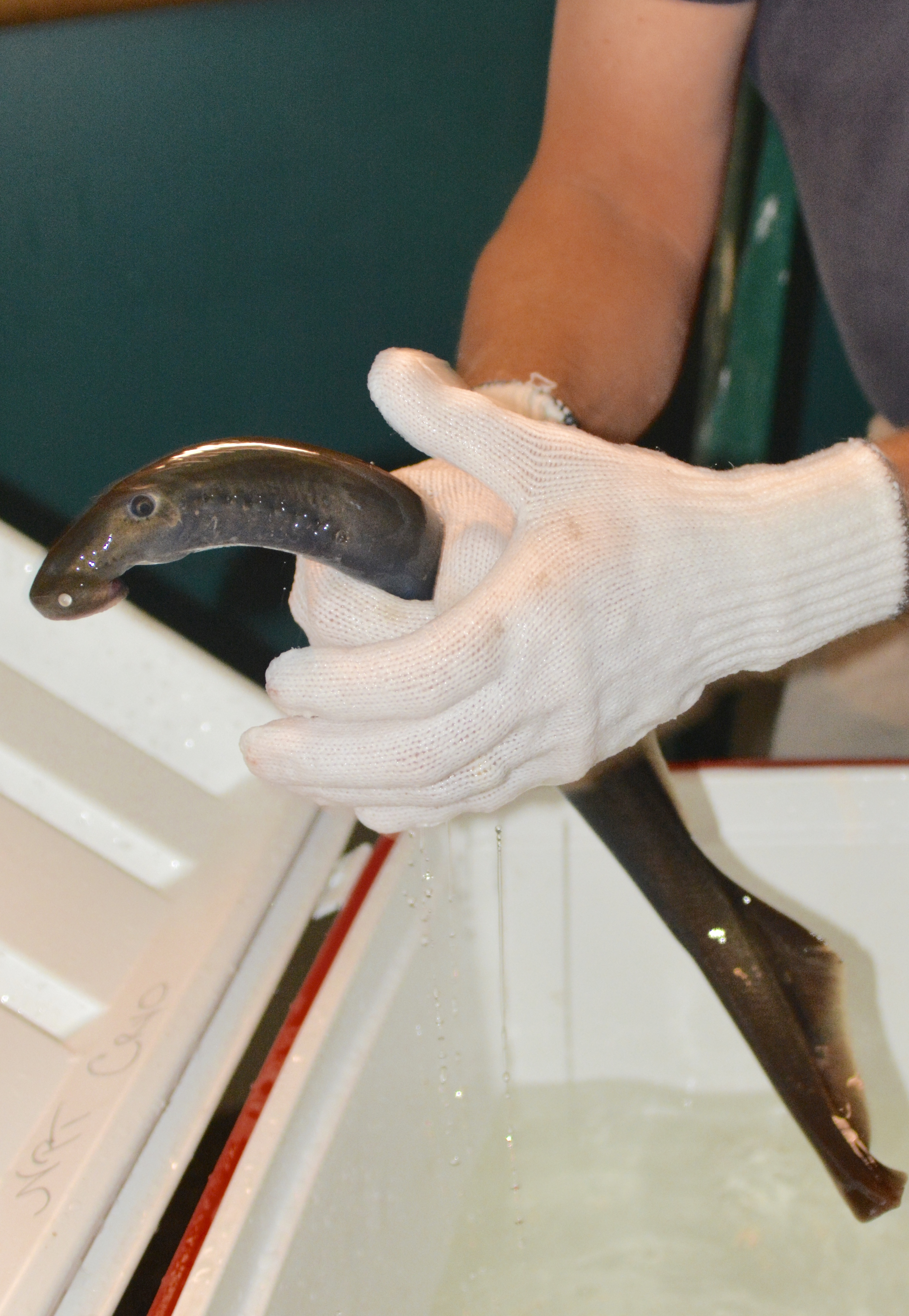 Visitors to the Fish and Game MK Nature Center now have the opportunity to see one of Idaho's most unique, but rarely talked about animals: Pacific lamprey.
Visitors to the Fish and Game MK Nature Center now have the opportunity to see one of Idaho's most unique, but rarely talked about animals: Pacific lamprey.
Fish managers at the Nez Perce Tribe will deliver three lamprey to the Nature Center on Monday, July 11 to give visitors the opportunity to see these amazing fish close-up through one of the center’s large aquariums.
Pacific lamprey, sometimes incorrectly referred to as eels, are the least understood of Idaho’s native fish. They are anadromous, meaning they are born in fresh water, then migrate to salt water, and return to fresh water to spawn.
They are also the most primitive fish in Idaho, their ancestors dating back 500 million years. They have no bone, only cartilage, and swim without paired fins. Since they lack jaws, they obtain their food through a sucking disk. Adults migrate at the same time as spring Chinook salmon, reaching headwater streams by September. They spend the winter there and spawn between April and July in sandy gravel areas. Once the eggs hatch, the juveniles burrow in sandy areas for up to six years, feeding on plankton.
When they reach five to twelve inches, young lamprey, called amocetes, start drifting downstream toward the ocean and develop eyes and a toothy mouth. In the ocean they are parasitic, attaching themselves to other fish. They can grow to almost 27 inches in the two years they spend in the ocean before they head upstream to spawn, often catching a ride on adult salmon and steelhead.
Once residing in all waters where salmon and steelhead lived, recent observations have been limited to some tributaries in the Clearwater and Salmon River drainages.
The Nature Center is located at 600 South Walnut Street behind Fish and Game Headquarters. For more information, go to https://idfg.idaho.gov/education/mknc.
Display of these Pacific lamprey is possible thanks to a partnership between the Nez Perce Tribe Fisheries Lamprey Translocation Project and Idaho Fish and Game.
